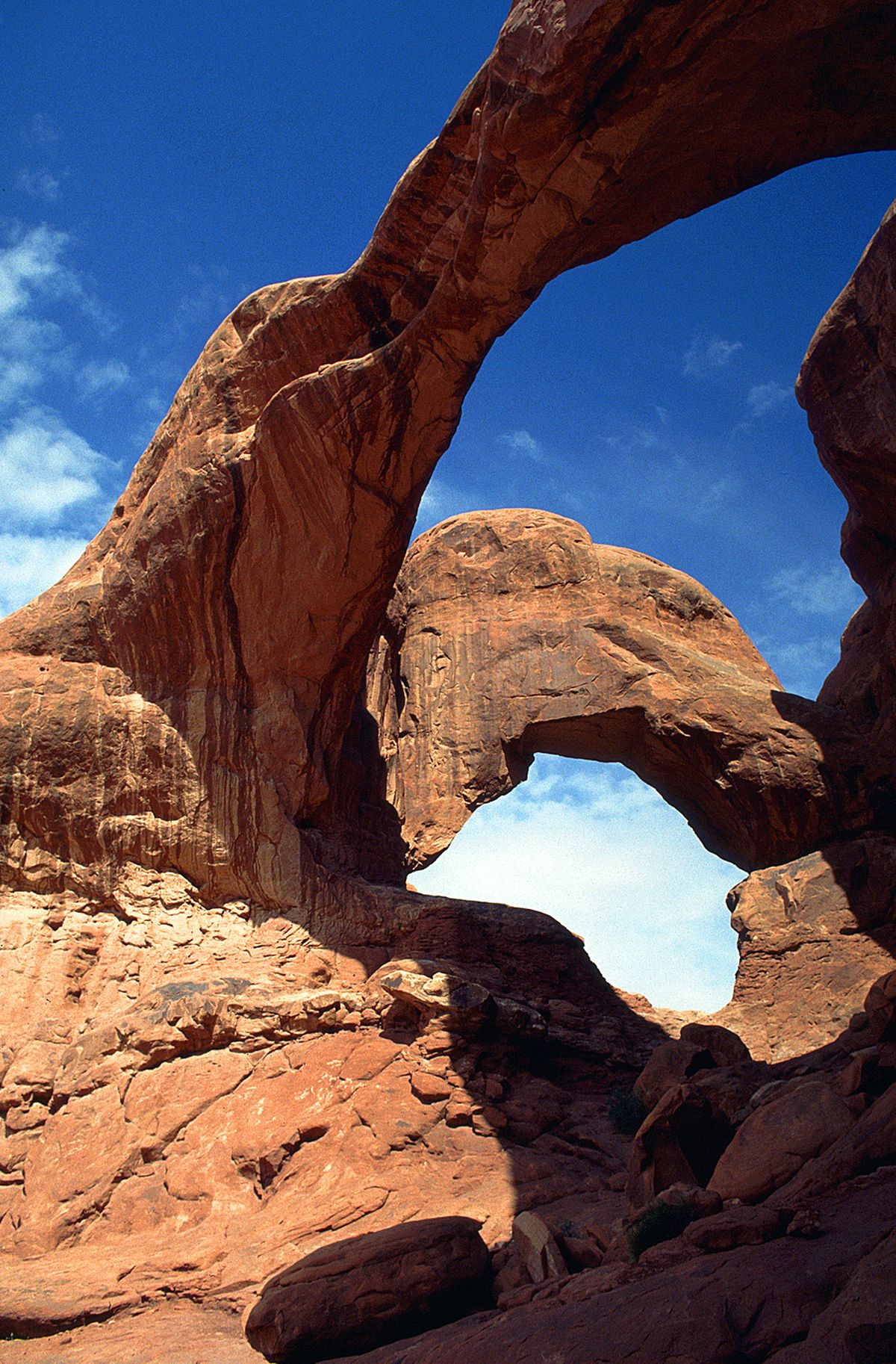Utah tops for arches

Rumors that a great arch in China could put southern Utah’s natural wonders in the shade have fallen to a real-world truth: Utah rules!
Thanks to some dedicated scientists, modern technology and newly established measurement standards, Landscape Arch in Arches National Park has been declared 3 feet longer than Kolob Arch in Zion National Park.
At 290 feet and 287 feet long, respectively, the two redrock marvels head the Top 10 Arches of the World, a list that includes six Utah arches.
It took geologists nearly three decades to settle the argument, Utah Geological Survey mapping program manager Grant Willis said. Not until a band of obsessive neo-geo global explorers formed the Natural Arch and Bridge Society and laid out exactly how spans should be measured could the argument end, he said.
The group of professional and amateur geologists concluded that the span of an arch – the total horizontal length of its opening – defined “biggest.” Then the society’s geologists set out to measure spans in some of the world’s most difficult places to reach.
Along the way, there were casualties. In 2007, Kachina Natural Bridge in Natural Bridges National Monument about 35 miles west of Blanding got zapped when a laser measurement showed it a mere 192 feet long.
China has its share of jaw-dropping arches. So do Arizona, Kentucky and at least 66 other nations included in the Natural Arch and Bridge Society’s vast Web gallery. But the only arch on the Top 10 not in the American Southwest is Aloba Arch in the Saharan Ennedit Range of Chad in north-central Africa.
In earlier times geologists used tape measures, survey transits, slide rules and plumb bobs to calculate arch size, Willis said. Those retro devices haven’t entirely faded from history, but lasers and Google Earth now serve as the instruments of choice.
Many discoveries come about accidentally. A group of climbers in 2006 discovered and named Outlaw Arch, a 206-foot-long alcove arch on the Colorado side of Dinosaur National Park near Vernal that is No. 9 on the Top 10.
Willis, who has produced or co-produced more than 40 geologic maps, is mapping Glen Canyon Natural Recreation Area.
While it might seem this task was completed long ago, that was just for topography, he said. A geologic map focuses on the rocks and minerals in the formations, sand and gravel, metals, paleontological resources, mines, major oil and gas drill holes and significant wells and springs.
So could there be bigger arches out there yet undiscovered? Willis said yes, and in fact has found some smaller ones he’s certain no one else had seen before. His reaction: “It was just, ‘That’s cool.’ ”
Others, though, can’t let it go until their understanding is complete.
“We like to know, we like to understand,” Willis said. “Part of that is to classify it, to break it down into understandable parts. The more science we have in us, the more likely we are to do that.”
There’s no question Willis is a scientist. Still, he said, “there’s something in me that’s a little bit sad. We’ve captured one more wild thing.”